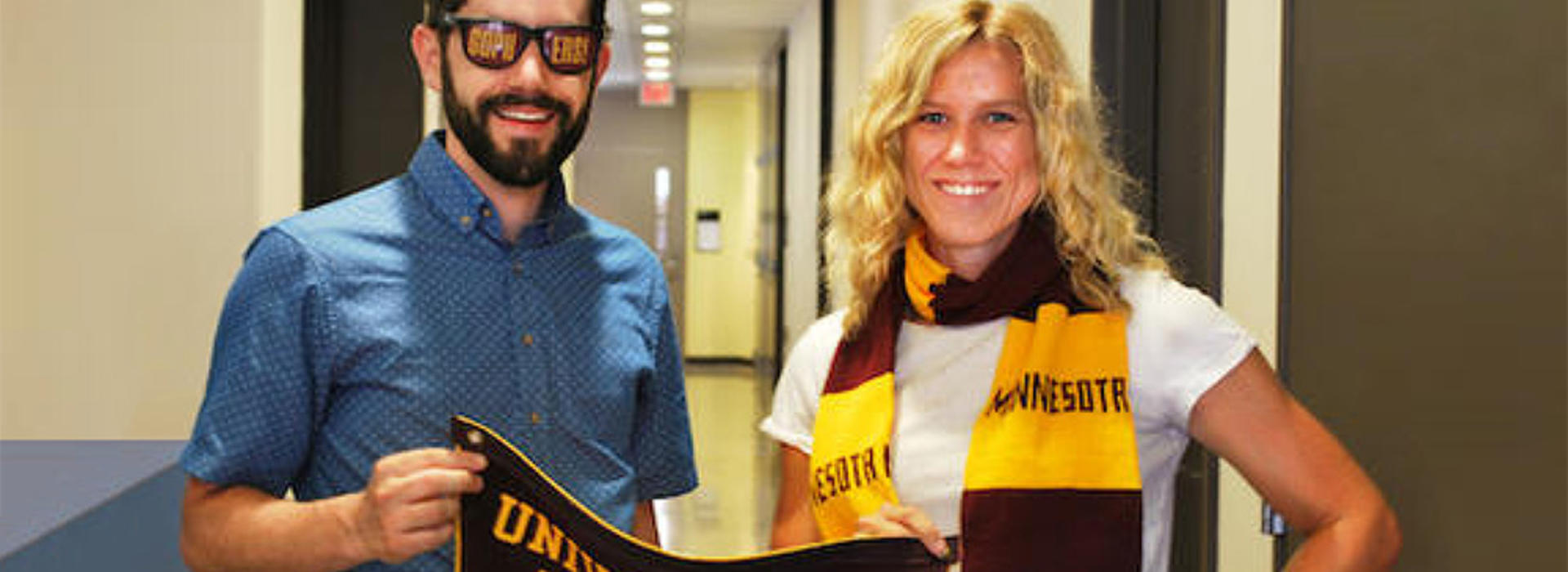
Behind the Sidelines
It’s not often you get to be on the sidelines of a Division l football game or in the training room of a professional sports team. The reality for residents and fellows in the Program in Sports Medicine at the University of Minnesota is that they do. They get to experience the game up close and the injuries that accompany high-level performance. It’s this real-world experience that introduces them to the challenges of being a sports medicine physician.
“The biggest challenge when dealing with high-level Division I athletes is the situation,” said Bradley Nelson, MD, Medical Director for University of Minnesota Athletics. “It’s not so much their diagnosis; it’s the fact that they may have a big game coming up or limited time to get better.”
While trainees may have a more observational role during Gopher Athletic events, they’re given much more autonomy at the Division lll level. There, fellows act as the teams’ primary sports medicine physician, diagnosing injuries and bringing them through the recovery process.
“We each have a Division lll college. I’m at the University of St. Thomas, and my co-fellow is at Bethel University,” said Jaimi Weber, DO, fellow in the Program in Sports Medicine. “We get to have a training room there where we run a clinic every week in which we see student-athletes for illnesses, sports injuries, and even mental health.”
Beyond the Twin Cities’ Division lll colleges, trainees in the program also have the opportunity to gain experience through numerous high-level events held throughout the year. These events bring in athletes from high school up to olympic-level.
“We provide medical coverage for events, such as the X Games, the U.S. Pond Hockey Championships, the Medtronic Twin Cities Marathon and the NCAA Final Four this past year. We’ll also provide medical coverage for the NCAA wrestling championships at U.S. Bank Stadium in 2020,” said Nelson. “The goal is to allow them to see the whole spectrum of athletic medicine and team physician function so they can see team physician work at a high level, but have the opportunity to make some independent decisions at the lower level.”
As medical students, they study information in a classroom environment, but as residents and fellows they apply their knowledge in real-life situations. It’s events like these that provide trainees valuable hands-on experience they can’t learn anywhere else.
“I honestly love the fact that sports medicine is fun in the sense that you get to cover athletics and you get to treat young athletes and collegiate athletes and professional athletes if that’s what you want,” Weber said. “You can also help people who are struggling with knee pain because they want to do a 5K with their friend or they want to get back to work. So, it’s that all encompassing health and wellness that I think we, in society, need more people to be excited about.”